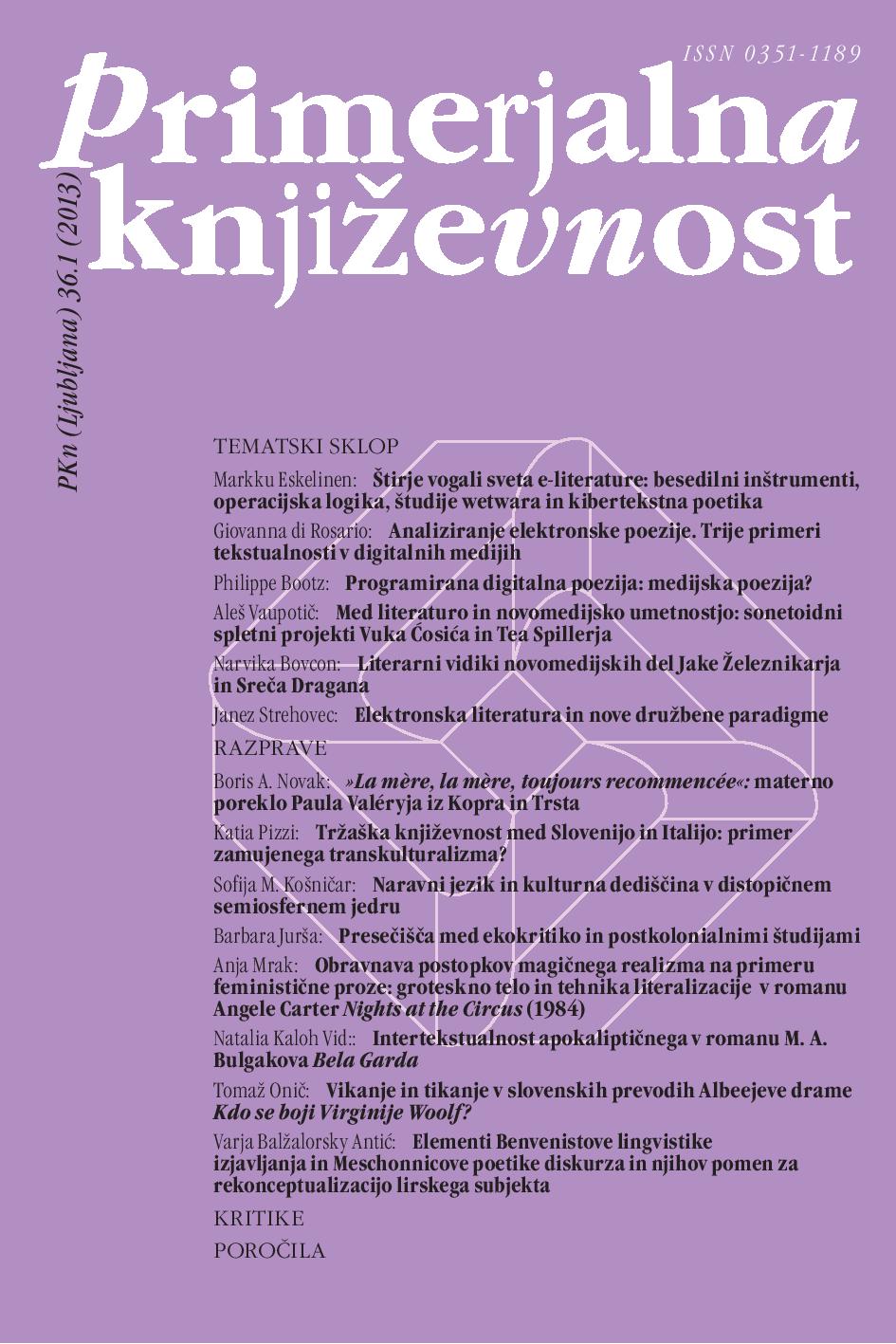Natural Language and Cultural Heritage in a Dystopian Semiospheric Core
Keywords:
semiosphere, culture, semiospheric core, semiospheric self-description, language, dystopiaAbstract
This article deals with aspects of natural language and its applications in a non-elastic semiospheric core, which is immanent to dystopic, totalitarian cultures. These phenomena have been considered in a semiotic key, from the position of the semiospheric theory (self-description of the semiospheric core, mechanisms of establishing it, the aspect of secondarity, and external core disorganization). Emphasis is placed on research on natural language, literary heritage, and other cultural heritage. To this end, appropriate dystopian literary material has been considered (George Orwell’s 1984, Aldous Huxley’s Brave New World, Ray Bradbury’s Fahrenheit 451, and Dragutin Ilić’s After a Million Years). This prose strictly, clearly, and picturesquely repeats and reshapes in miniature the entire model of semiospheric self-description of totalitarian culture, and therefore it is suitable for semiotic research from the perspective of semiospheric theory, with the aim of prognostic projections and dialogue with the contemporary reality of cultures.References
Bradbury, Ray. Fahrenheit 451. Prev. Sonja Kravanja. Ljubljana: Delo, 2004. (Vrhunci stoletja 38)
Bahtin, Mihail. »Jedinstvo hronotopa.« Polja 32.330–331 (1986): 355–357.
Crnjanski, Miloš. Kod Hiperborejaca II. Beograd: Prosveta; Novi Sad: Matica srpska; Zagreb: Mladost, 1966.
Huxley, Aldous. Krasni novi svet. Prev. Boris M. Verbič. Ljubljana: Mladinska knjiga, 2003.
Ilić, Dragutin. Posle milijon godina. Sekund večnosti. Beograd: Narodna biblioteka Srbije, 1988.
Košničar, Sofija. »Kod, kodovi kulture.« Pregledni rečnik komparatističke terminologije u književnosti i kulturi. Ur. Bojana Stojanović Pantović, Miodrag Radović in Vladimir Gvozden. Novi Sad: Akademska knjiga, 2011. 191–195.
– – –. »Semiosfera.« Pregledni rečnik komparatističke terminologije u književnosti i kulturi. Ur. Bojana Stojanović Pantović, Miodrag Radović i Vladimir Gvozden. Novi Sad: Akademska knjiga, 2011. 347–352.
Lotman, Jurij M. »Asimmetrija i dijalog.« Izbrannye stat’i v treh tomah. Izdanie vyhodit pri sodejstvii Otkrytogo Fonda Estonii, tom I, Stat’i po semiotike i topologii kul’tury. Talin: Aleksandra, 1992. Splet 6 avg. 2009. http://www.gumer.info/bibliotek_Buks/Culture/Lotm/index.php.
– – –. »Dinamičeskaja model’ semiotičeskoj sistemy.« Izbrannye stat’i v treh tomah. Izdanie vyhodit pri sodejstvii Otkrytogo Fonda Estonii, tom I, Stat’i po semiotike i topologii kul’tury. Talin: Aleksandra, 1992. Splet 7 avg. 2009. http://www.gumer.info/bibliotek_Buks/Culture/Lotm/index.php.
– – –. »Ogledi iz tipologije kulture.« Treći program Radio Beograd 4 (1974): 439–489.
– – –. »O semiosfere. Semiotika kul’tury.« Izbrannye stat’i v treh tomah. Izdanie vyhodit pri sodejstvii Otkrytogo Fonda Estonii, tom I, Stat’i po semiotike i topologii kul`tury. Talin: Aleksandra, 1992. Splet 6 Feb. 2010. http://www.gumer.info/bibliotek_Buks/Culture/Lotm/index.php.
– – –. »Razne kulture, različiti kodovi.« Polja 318 (1985): 274–275.
– – –. Semiosfera. U svetu mišljenja. Novi Sad: Svetovi, 2004.
Maxwell, Jordan. »Ko poseduje vašu vladu poseduje i vas.« Pečat 202 (2012): 67–69.
Orwell, George. 1984. Prev. Alenka Puhar. Ljubljana: Mladinska knjiga, 1983. (Knjižnica Kondor, 212)
Šušnjić, Đuro. »Orvelijana – Utopija koju živimo«. Džordž Orvel. 1984. Beograd: Čigoja štampa, 1999. 5–19.


